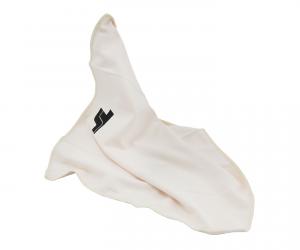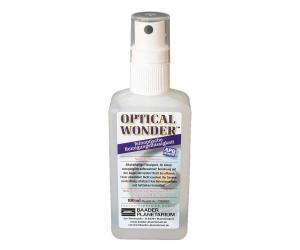- Telescopes
- Overview:
Telescopes - Achromatic Refractor
- Apochromatic Refractor
- Overview:
Apochromatic Refractor - ED Refractor - less color aberration than an achromatic
- SD APO - color free 2-element APO objective
- EDT APO - 3 element ED objective
- High End APO with 3-element APO objective - no color aberation
- Flatfield APO with flat field for Astrophotography
- All Apos and EDs from all manufacturers - large overview
- TS APO and ED from Japan with high quality optics
- Overview:
- Newtonian Telescopes
- Dobsonian Telescopes
- RC Ritchey Chretien Telescopes
- Casssegrain Telescopes
- Reflektor Telescopce with Lens Correcture
- Maksutov Cassegrain Telescopes
- GoTo Telescopes
- Solar Telescopes H-Alpha
- Overview:
- Mounts Tripods Rings Rails Power Supply ...
- Overview:
Mounts Tripods Rings Rails Power Supply ... - Mounts Equatorial with GoTo
- Mounts Equatorial without GoTo
- Mounts Azimutal with GoTo
- Mounts Azimutal without GoTo
- Mounts GoTo - Harmonic Drive
- Travel mounts for astro imaging
- Tripods Piers Polar Wedges
- Mount Control & Electronics
- Dovetail Clamps, Plates and Mount Adapters
- Tube Rings
- Power Supply
- Counterweights Balance Weights
- Mount Accessories - Other
- Overview:
- Telescope Accessories
- Overview:
Telescope Accessories - Eyepieces
- Barlows & Reducer Lenses
- Diagonal Mirrors and Prisms
- Binocular Viewers
- Finder Scopes
- Telescope Collimation and Test
- Cleaning Tools
- Transport and Storage
- Dust protection for Telescopes & Accessories
- Stray Light Protection
- Dewcaps and Heater
- Focusers, Adapters, Motorfocus
- Telescope DIY & Improvement
- Other telescope accessories
- Replacement Parts
- Overview:
- Filters
- Overview:
Filters - Color Filters and Color Filtersets
- Nebular Filters for Visual Observing
- Neutral-Density and Polfilter
- Photo Narrowband Nebular Filters
- Photo Broadband Filters
- Photo Planetary Filters
- Photo R-G-B and IR Cut Filters
- Photo - Filtersets
- Photometric Filters
- Clip Filter for DSLR Cameras
- Filter Wheels and Filterslider
- Solar Filters for white light
- Solarfilter for H-Alpha and Calcium
- Overview:
- Adaptors
- Overview:
Adaptors - Adapter 1,25" and 24,5mm
- Adapter 2"
- Adapter T2 - M42x0.75
- Adapter M48x0,75
- Adapter M54
- Adapter SC
- Adapter M63
- Adapter M68
- Adapter to other Threads
- Adapter Extensions
- Adapter camera bayonet
- Adapter Objective Filterthread
- Adapter Quick Changing , Rotation
- Adapter Eyepiece Projection
- Adapters Tilting
- Overview:
- Astrophotography and Photography
- Overview:
Astrophotography and Photography - Cooled Cameras
- Cameras without Cooling
- Deep-Sky Cameras uncooled
- Set-Offers Camera, Filter, Wheels
- Acessories for Cameras
- Travel mounts for astro imaging
- Imaging Correctors for Telescopes
- Autoguiding Cameras & Sets
- Everything for Guiding
- Focusing aids - Bahtinov mascs
- Flat Field foils and boxes
- Lenses for Cameras
- Piggyback Camera Holder
- Camera Bags, Photocases & more
- Digital Camera and Smartphone Adapter
- Other photo accessories
- Overview:
- Binoculars, Spotting Scopes, Microscopes, Range Finders
- Overview:
Binoculars, Spotting Scopes, Microscopes, Range Finders - Spotting Scopes and Acessories
- Roof Prism Binoculars
- Binoculars with Porro prisms
- Binoculars from 100mm Aperture
- Binoculars with 1,25 inch eyepieces
- TSMX APO Binoculars
- Binoculars for Astronomy
- Binoculars Hiking Bird watching
- Monoculars - Opera Binoculars
- Accessories for Binoculars
- Range Finders
- Microscopy
- Bags for Phototripods & Binoculars
- Overview:
- Phototripods and Binomounts
- Books, Software
- Overview:
Books, Software - Books for Astronomy Beginners
- Star Charts and Planispheres
- Books about our Solar System
- Observing Tips for Amateurs
- Popular Astronomy Literature
- Teaching material
- Astrophotography books
- Telescopes, Observatories, Construction
- Calendars Yearbooks
- Software, Star Charts
- Books for Microscopers
- Books Nature and Animals
- Nature Photography TimeLapse
- Overview:
- Night Vision, Magnifiers, Weather, Domes & more
- Beginner Astronomy and Gift Ideas
- Second Hand & Special Offers
- New products
Manufacturer: Astronomik Filter
Product number: 8h00ka
EUR129.00new
EUR 129,00
incl. 19 % VAT (DE)
The VAT indicated refers to that applicable in Germany. After logging in, the VAT amount is adjusted to the applicable VAT of the stored delivery country. Therefore, the final price may vary accordingly.
excl. 6.95 € shipping costs (DE)
more details to the shipping costs ...Please log in to calculate shipping costs to your country.
There are no reviews for this product
- Details..
- Technical data..
- In the box..
- Manufacturer infos..
- Safety informations..
The OWB filter would usually not be designated as an "astronomical" filter. The intention is to enable converted DSLR cameras (without inbuilt IR-filter) in order to be used for ´terrestrial´ photography.
The OWB (Original White Balance) filter shifts the complete spectrum of a converted DSLR in such a manner that the camera will not be exclusively usable for astro-photography. Therefore the decision, which in former times had to be made, whether to ´victimize´ a DSLR in order to exclusively use it for astronomical tasks or accept the lower sensitivity on the red end of the spectrum, it is now a thing of the past and disencumber your purse, too.
Compatibility:
The OWB EOS Clip filter fits in all APS-C sized series of cameras from Canon: 20D, 30D, 40D, 50D, 60D, 70D, 7D, 300D, 350D, 400D, 450D, 500D, 550D, 600D, 650D, 700D and it also works with the 1000D, 1100D and 100D ...
Almost all Canon system lenses (with the exception of the EF-S series) and all M42 and T2 lens adapters, can be used with the Astronomik Clip-Filter System.
Main use:
DSLR cameras which have been converted for astronomical use by removing the inbuilt IR-filter or by substituting it with a filter with greater range for H-alpha, have a white balance that made them unable for ´terrestrial´ purpose. The spectral sensitivity of the DSLR will be changed by an OWB-Filter to the former range. In other words: The OWB pretend to be the conventional built-in filter!
Use of the Filter:
Adapting modified DSLR cameras (removed or substituted inbuilt IR-filter) to achieve standard colour space in digital imaging via a special spectral curve.
Filter transmission curve:

The horizontal axis is the wavelength in nanometers (nm). 400 nm is deep blue, at 520 nm the human eye senses green and at 600 nm red. At 656 nm is the famous "H-Alpha" emission line of hydrogen. The transmission in % is plotted on the vertical axis. The red line shows the transmission of the filter. Visual filters: The grey line in the background shows the relative sensitivity of the human eye at night. The maximum is at ~510 nm and drops to longer and shorter wavelengths. You can easily see, that you can´t see anything of the H-alpha line at night (even if you can during daylight!) The sensitivity at 656 nm is 0% at night! Photographic filters: The grey line in the background shows the sensitivity of a typical CCD sensor. The most important artifical emission lines are shown in orange. The artifical light pollution is dominated by see mercury (Hg) and sodium (Na), which are used in nearly all streetlights. The most important emission lines from nebulas are shown in green. The most important lines are from ionized hydrogen (H-alpha and H-beta), double ionized oyxgen ([O III]) and ionized sulfur ([S II]). The square brackets indicate that these lines are forbidden.
The OWB (Original White Balance) filter shifts the complete spectrum of a converted DSLR in such a manner that the camera will not be exclusively usable for astro-photography. Therefore the decision, which in former times had to be made, whether to ´victimize´ a DSLR in order to exclusively use it for astronomical tasks or accept the lower sensitivity on the red end of the spectrum, it is now a thing of the past and disencumber your purse, too.
Compatibility:
The OWB EOS Clip filter fits in all APS-C sized series of cameras from Canon: 20D, 30D, 40D, 50D, 60D, 70D, 7D, 300D, 350D, 400D, 450D, 500D, 550D, 600D, 650D, 700D and it also works with the 1000D, 1100D and 100D ...
Almost all Canon system lenses (with the exception of the EF-S series) and all M42 and T2 lens adapters, can be used with the Astronomik Clip-Filter System.
Main use:
DSLR cameras which have been converted for astronomical use by removing the inbuilt IR-filter or by substituting it with a filter with greater range for H-alpha, have a white balance that made them unable for ´terrestrial´ purpose. The spectral sensitivity of the DSLR will be changed by an OWB-Filter to the former range. In other words: The OWB pretend to be the conventional built-in filter!
Use of the Filter:
Adapting modified DSLR cameras (removed or substituted inbuilt IR-filter) to achieve standard colour space in digital imaging via a special spectral curve.
Filter transmission curve:

| Spectral sensitivity with camera: | like human eye |
| UV and IR blocking: | yes |
| Mounting: | Clip-mounted for Canon EOS cameras with APS-C sensor |
| Inserting and removing: | within seconds |
| Camera and lens funtions: | unaffected |
| Anti reflective coating: | completely resistant against high humidity, scratches and aging effects |
| Manufacturer / Importeur: | Vesting e.K. |
| Street: | Storchenweg 6 |
| ZIP / City: | 21217 Seevetal |
| Country: | Germany |
| Telefon number: | +49 40 5114348 |
| Email: | astro@astro-shop.com |
| Website: | www.astro-shop.com |
Safety informations: PDF Download
Recommended accessories
Cleaning & Collimating
TS-Optics Optical Super Microfiber Cleaning Cloth
EUR 4,99RRP EUR 7,95you save 37.2% (EUR 2,96)
Reviews
Written by Harald Welsch
on 2021-12-04
"Farbwiedergabe entspricht fast dem Originalfilter, der ausgebaut wurde"
Written by Frank Klose
on 2021-06-01
"Verwendung in Verbindung mit Canon EOS 90D Astro modifiziert für terestrische Aufnahmen. Alles Canon bzw Sigma Objektive mit EF Anschluß funktionieren ohne Probleme."
Written by Ralf Kleessen
on 2018-01-05
"Bildqualität bei Tageslichtaufnahmen und automatischem Weißabgleich OK. "











